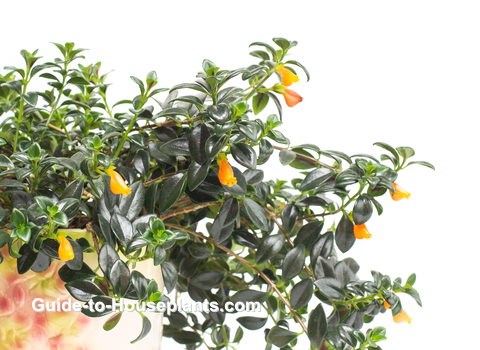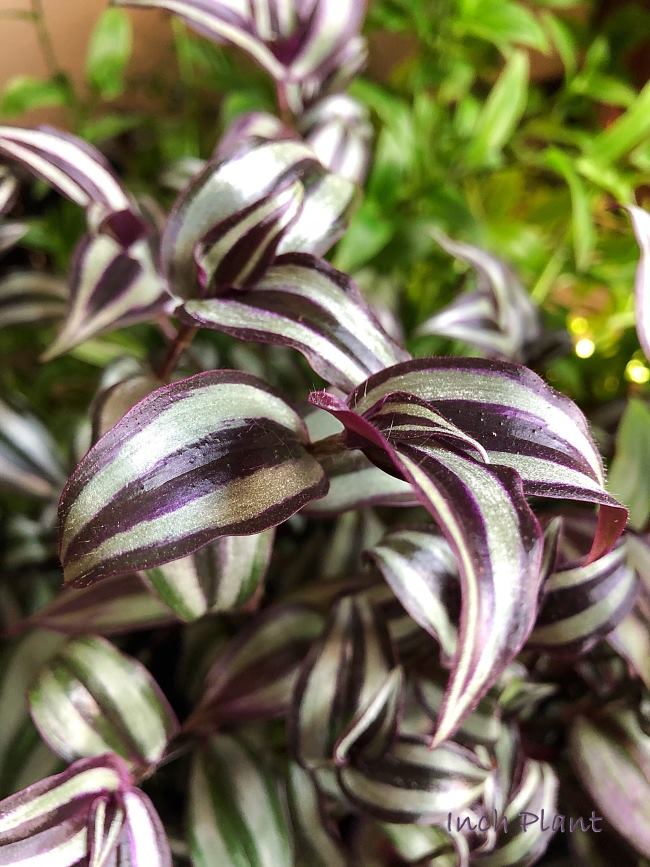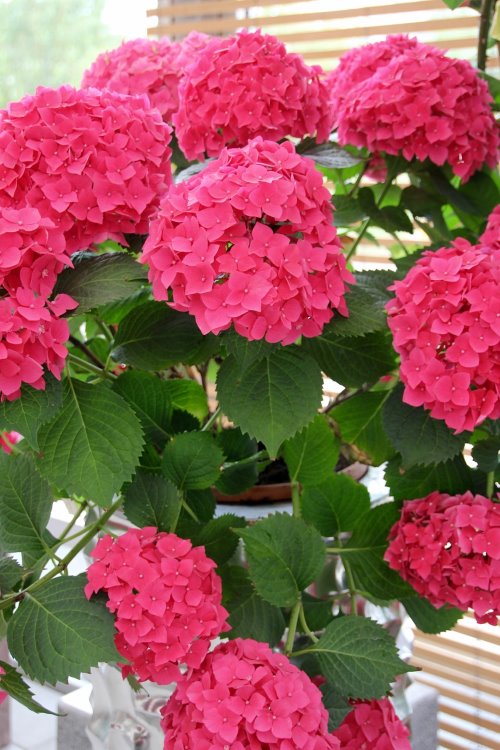How to Grow Japanese Camellia Indoors
Botanical Name: Camellia japonica
You'll be successful growing Japanese camellia indoors if you keep a few things in mind. Put them in a cool location where they'll get indirect sun. Keep the soil moist. Oh, one other thing...they need high humidity. This may be easy to accomplish, depending on your climate. Camellias don't like the hot, dry air of heated homes in the winter.
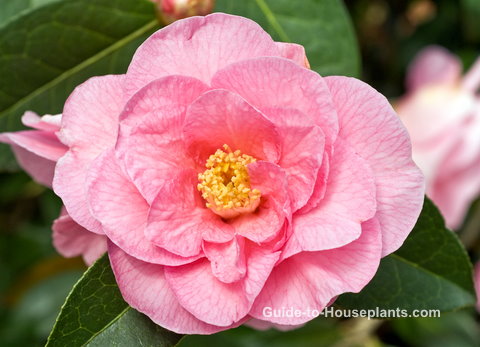 Semi-Double Pink Camellia Japonica Bloom
Semi-Double Pink Camellia Japonica BloomJapanese camellia shrubs have woody branches covered with thick, glossy dark-green leaves. In the garden, they can grow several feet high; but indoors, you can keep them a reasonable size with regular pruning. In fact, these beauties can be grown as bonsai.
Japanese Camellia Varieties
You'll find Camellia japonica plants in bloom in the winter or early spring. Big, showy camellia flowers are available in single, semi-double and double-flowered varieties. The flowers are 3-6 inch (7.5-15 cm) wide. You'll typically find camellias in pink, red or white -- sometimes speckled or striped.
More than 2,000 hybrids are available. 'Alba Plena' is an early-flowering cultivar and one of the most popular with snowy white blooms. 'Elegans' sports big pink flowers often flecked with white. 'Chandlers Elegance' has lovely patterns in pink and white. 'Pink Perfection' has pale-pink double blooms.
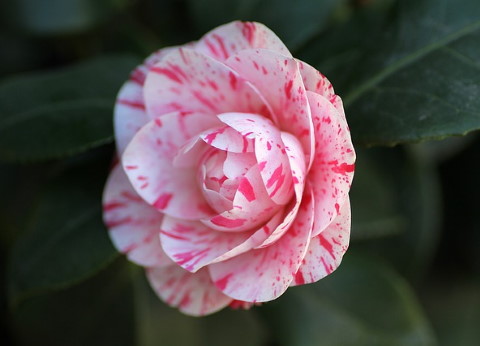 Double-Bloom Camellia Japonica 'La Peppermint'
Double-Bloom Camellia Japonica 'La Peppermint'Caring for Japanese Camellia Plant Year-Round
Coax more blooms. Growing camellias outdoors for the summer will coax new flower buds to form. Keep them shaded from direct sun. Camellias are tender perennials so be sure to bring them back indoors before the first frost.
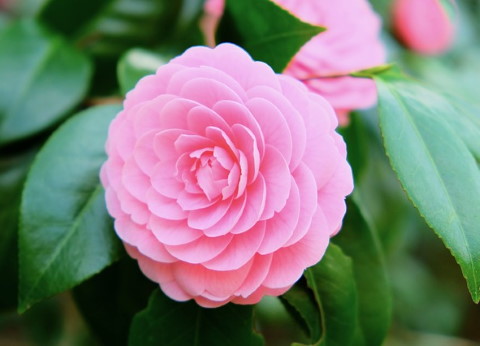 Camellia Japonica 'Pink Perfection' is one of the most popular varieties.
Camellia Japonica 'Pink Perfection' is one of the most popular varieties.Prune in spring. Pruning camellias will keep them a manageable size indoors and encourage branching. Prune the stems back hard in spring, after flowering. Buds form on the tips of new branches, so you'll get more blooms this way. Cut stems at a 45° angle, just above a node (the place where a leaf or branch is attached to the stem). Use sharp pruners to avoid tearing the stems.
Repot in spring, after flowering. Move up to a container 1 size larger every 2-3 years, or when needed. If your camellia plant is already big, you can top-dress instead by removing the top 2-3 (5-7.5 cm) inches of soil and replace it with fresh, lime-free soil.
Something bugging your plant? Camellia diseases include black spot -- a fungus that should be treated with a fungicide specially made for black spot. Giving plants good air circulation helps to prevent any fungal disease. Common pests are aphids and scale insects. These are more common when growing camellias outdoors; however, it's a good idea to check your plant over and treat any infestation immediately.
How to Grow Japanese Camellia Indoors
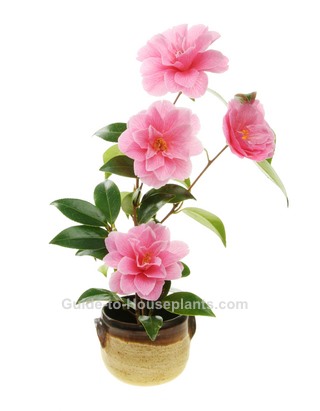
Origin: Japan, China, Korea
Height: Up to 10 ft (3 m) indoors. Prune to keep the shrub small. Camellia can be grown as a bonsai.
Light: Bright indirect light. Some cool, direct morning sunlight is fine.
Water: Keep the soil evenly moist, especially when plant is budding and flowering. Soil that's too wet or too dry will cause buds to drop off. After flowering, allow top of soil to dry out between waterings.
Humidity: Aim to maintain 50% relative humidity or higher. Mist foliage regularly and stand camellia plant on a tray of wet pebbles. Use a cool-mist room humidifier in winter, if needed.
Temperature: Cool 45-60°F/7-16°C . Make your flowers last longer by keeping the plant in a slightly cooler location. Blooms will last for weeks if kept at a maximum of 60°F/16°C.
Soil: Likes acidic medium. Use a lime-free peat moss-based mix.
Fertilizer: Feed every 2 weeks, beginning with the first show of flower buds till the end of flowering. Use a high-phosphorus fertilizer that contains iron.
Propagation: Take stem tip cuttings in winter and root in moist potting mix.
